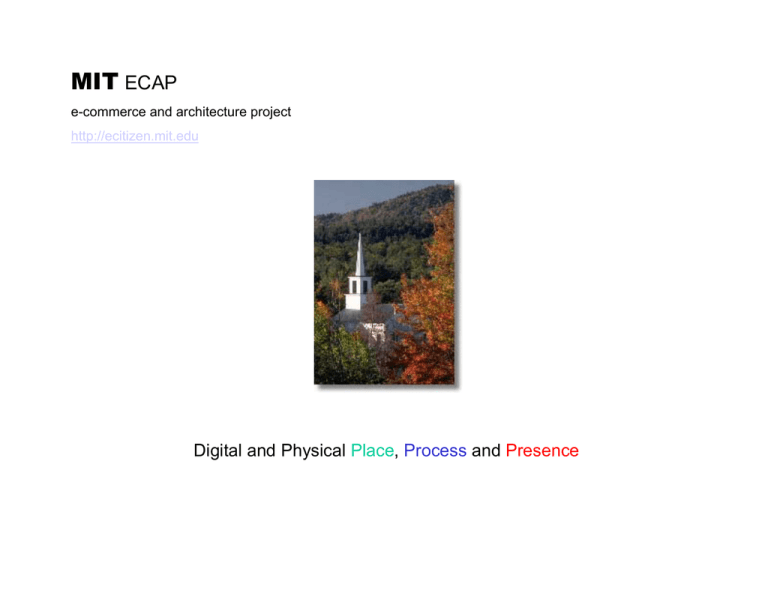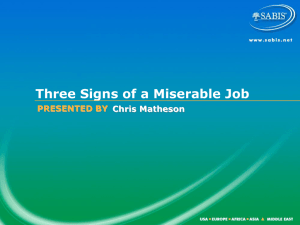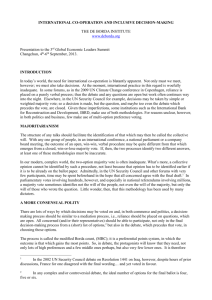Document 13479297
advertisement

MIT ECAP e-commerce and architecture project http://ecitizen.mit.edu Digital and Physical Place, Process and Presence Introduction In this seminar, students will design a digital environment to house and facilitate participatory democracy. To ground the design, Massachusetts’s local form of government, known as “Open Town Meeting” (OTM), will be modeled as an example. OTM requires all interested townspeople to get together once a year and determine basic issues like the tax rate, zoning/development questions or allowing sex education in schools. The thesis of this seminar is that this very old form of direct democracy can be facilitated and made more broadly accessible by allowing remote users to participate in the decision rooms and by unleashing the right technology in and around those physical rooms. This rough design slide presentation sketches a possible interface, flow and function set for the remote users. QUERY INTRODUCTION/LOG-IN Provide information on purpose of site; allow user to access site as guest. Allow them to register (linking to registration information. Log-In. Search the entire site (including archives) according to certain search criteria. Anonymity function allowed. GU/GV BACKGROUND Member of community who posts an issue for debate must provide objective contextual and background information. The page will feature the highest rated arguments for and against the proposed idea. Have private discussions. Anonymity function not allowed. GV POST REGISTRATION Fill in preferences for use of site; provide profile information and filtering criteria, etc. HELP Can post inquiries. Also provides information on any function of the site. TERMS OF USE Rules and regulation son use of site and proper user conduct. ARCHIVE Storage Area of all recorded information: post, debate, vote results and appeals. Objectively present an issue that concerns you and your community. Must specify category of subject matter, as a new idea, reaction to an idea. Anonymity function allowed.GV DEBATE/DISCUSS Members of community can address the raised issue, present their arguments for or against the proposed idea. Have private discussions. Limitation of 2 debate entries, no more than 100 words. Here comments are rated (eg. ‘redundant’, ‘uncivil’, ‘agree’, ‘disagree’) by other users and then collaboratively and filtered appear in the background section. Anonymity function allowed.GV APPEALS This are will provide information for any overturned decisions and provide the related legal notes. GV yourPORTAL Portal which can include: Links to local news, collaborative and/or personal filtering, contact list, a biography (optional), interests, privacy controls (log in with alias, full name or anonymously) and other customization features. MEMBER PROFILES Can access the member profiles from a query or by linking from a post or debate entry. NOT accessible via anonymous link from post. GVL Accessibility to Guests VOTE In phase 1 members vote on whether it should go to a vote. In phase 2, Members of community can vote for, against or choose to abstain. Anonymity function NOT allowed GU=Guest Usable GV=Guest Viewable GVL=Guest View Limited Electronic Town Meeting An Example of embedding MSN Messenger Community The social interaction aspect of town meetings constitutes around 80~90% of the meeting. The goal of embedding a synchronous or asynchronous interaction device is to enhance the experience of creating a sense of community. Instant voice video email files phone Community Chatting Votes Statistics Friend Conf. Agree Disagree Parties Friends Town Meeting Others Etc. NEXT STEPS User testing Software development (open source) U.I. Press Amendments Process



